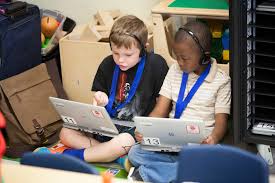The increasingly multicultural nature of today’s classrooms presents both opportunities and challenges for language education. Forward-thinking teachers have discovered valuable allies in age-appropriate kids animated shows designed to support multilingual development. Unlike traditional language instruction that often relies heavily on direct translation and explicit grammar instruction, quality linguistic animations create immersive contexts where language acquisition occurs more naturally through engaging narratives, consistent visual supports, and emotionally resonant characters that motivate sustained engagement with new linguistic patterns.
Language acquisition specialists identify several mechanisms through which animated content effectively supports multilingual development. Contextual learning represents perhaps the most significant advantage—animations embed new vocabulary and language structures within meaningful scenarios that clarify meaning. Multimodal presentation combines auditory language input with visual cues and often textual representation, creating multiple pathways for processing linguistic information. Additionally, the repetitive nature of many children’s animations provides multiple exposures to key language patterns, supporting the reinforcement necessary for language internalization while maintaining engagement through narrative progression.
Research examining second language acquisition through animated content reveals particularly promising outcomes for young learners. Studies comparing traditional vocabulary instruction with vocabulary embedded in animated narratives consistently show better retention and transfer when children encounter new terms within meaningful contexts. The emotional engagement children experience with animated characters creates motivation for understanding linguistic content, while the reduced anxiety of engaging with a non-judgmental medium allows for lower affective filters—a psychological state conducive to language acquisition according to established second language acquisition theories.
For emergent bilingual students navigating classroom environments in non-native languages, thoughtfully selected animations provide crucial comprehensible input—language that stretches slightly beyond current proficiency while remaining understandable through contextual supports. When teachers select animations with clear visual storytelling, predictable language patterns, and cultural relevance, they create bridges between students’ primary languages and target languages. These linguistic bridges help students transfer conceptual knowledge across languages while developing new linguistic frameworks simultaneously.
Phonological awareness—the ability to recognize and manipulate speech sounds—develops effectively through musical elements common in educational animations. Catchy songs featuring rhyme, alliteration, and phonemic play help children identify sound patterns essential for both first and subsequent language acquisition. When these musical elements appear within engaging animated contexts, children often spontaneously practice linguistic patterns through repeated viewing and singing along, reinforcing phonological development through enjoyable repetition rather than drill exercises.
Cultural context understanding represents another significant advantage of language learning through quality animations. Language never exists in isolation from culture, and animations that authentically represent diverse cultural practices provide important contextual knowledge that supports deeper linguistic understanding. When children observe how language functions within different cultural settings, they develop more nuanced comprehension of pragmatic aspects like formality levels, cultural references, and communication norms that extend beyond vocabulary and grammar knowledge.
Code-switching—the practice of alternating between languages within communication—receives thoughtful treatment in some contemporary multilingual animations. Rather than presenting this common multilingual practice as problematic, these animations normalize fluid movement between languages as a sophisticated communication strategy. This representation validates the experiences of multilingual students while helping monolingual students understand linguistic flexibility as an advantage rather than a deficiency. Many language teachers report that these representations help create more inclusive classroom environments for students navigating multiple linguistic identities.
Differentiated language instruction benefits tremendously from the flexible application possibilities of animated content. Teachers working with students at varying language proficiency levels can use the same animated content differently—perhaps focusing on basic vocabulary acquisition with beginning language learners while engaging more advanced students with cultural nuances or grammatical structures. This differentiation allows for whole-class engagement with shared content while addressing individual linguistic development needs appropriately.
Family engagement in language learning strengthens significantly when educational animations bridge school and home environments. When teachers recommend specific animated content that supports classroom language objectives, they create opportunities for family participation in language development regardless of caregivers’ proficiency in the target language. Many language teachers report that sharing information about educationally valuable animations leads to increased language practice beyond classroom hours and creates connection points between home and school learning environments.
The future of language education likely involves increasingly sophisticated applications of animated content, potentially including personalized pathways responsive to individual learning patterns and interactive elements that allow for language production practice. As technologies evolve, the foundational principles of effective language acquisition through contextual learning, emotional engagement, and multimodal presentation will continue to inform best practices. Throughout this evolution, the guidance of knowledgeable language teachers remains essential for selecting appropriate content, scaffolding understanding, and connecting animated language experiences to broader communication development goals.

